iPhone 11: New iPhone Release Date, Specs, Price and Leaks
Apple's iPhone XR, iPhone XS and iPhone XS Max represent important steps forward for the company's handsets and are among the best phones you can buy. But there's always room for improvement, especially with the Galaxy Note 10 and Pixel 4 on the way.

(Image: © Apple's 2018 iPhones (Credit: Tom's Guide))
With the iPhone's traditional fall launch date just a few months away, iPhone 11 rumors have kicked into high gear, promising a plethora of new features and updates in this year's models. The biggest rumors so far center around triple rear cameras, bigger batteries with reverse wireless charging and faster USB-C charging in the box.
Here's all the top rumors we've heard so far, as well as our wish list of what we would like to see in Apple's next devices.
Latest News (Update July 9)
No one expects this year's iPhones to offer compatibility with newly launched 5G networks. Instead, that's likely to happen with the 2020 models. While some analysts have predicted Apple will launch two 5G iPhones in 2020, a new report claims that there will be three 5G iPhones next year.
Purported images of the iPhone 11's logic board have popped up on SlashLeaks. They reveal a new design from this year's iPhones to make space for a larger battery. That squares with previous rumors about the iPhone that have promised more capacity in this year's models.
iPhone 11 release date
Apple announced the iPhone XS, XS Max and XR on Sept. 12, 2018, but the company staggered the actual release dates for the phones. The iPhone XS and XS Max were available for preorder Sept. 14 and they went on sale Sept. 21. The iPhone XR was up for preorder Oct. 19 and hit stores Oct. 26.
MORE: iPhone XS vs. iPhone XS Max vs. iPhone XR
If Apple follows a similar pattern for 2019, it would announce the 2019 iPhones on Sept. 10, which is a Tuesday. The handsets would likely go on preorder Sept. 13 and go on sale Sept. 20. But, it's a long time between now and September.
Leaker Evan Blass tweeted out a Verizon marketing document that suggests a late September launch date for this year's iPhones. There's some question about what the word "launch" means in this context — is it when Apple announces the new phones or is it when they go on sale at carriers like Verizon? If the latter, that means a similar time frame to last year, but if it's a late September date for the launch event, that could mean the iPhone 11 has a later debut than we've become accustomed to in recent years.

You can get a sense of some of the features coming to this year's iPhones in July, when a public beta of iOS 13 arrives. (Developers can already download the beta.) That's the new version of iOS that will come pre-installed on this year's iPhone, and it introduces new features like Dark Mode as well as enhancements to existing apps like Photos and Maps.
iPhone 11 price
The iPhone XS Max is one of the most expensive phones ever, starting at $1,149, while the iPhone XS costs $999. The iPhone XR is a more reasonable $749. There’s no reason to expect that Apple won’t stick with the same pricing tiers for the iPhone 11, iPhone 11 Max and iPhone 11R. However, Apple could go more mid-range with the iPhone 11R (perhaps closer to $600) to compete with the likes of Google’s Pixel 3a ($399) and Pixel 3a XL ($479), which deliver remarkably good cameras for a very aggressive price tag.
Cameras: An eye on three lenses
Apple's current iPhones offer solid cameras, but they're not the best camera phones out there. Flagships like the Pixel 3 and Huawei P30 Pro are better, especially in low light. One of the most popular iPhone rumors centers on whether Apple will opt for a triple camera array in its 2019 iPhones.
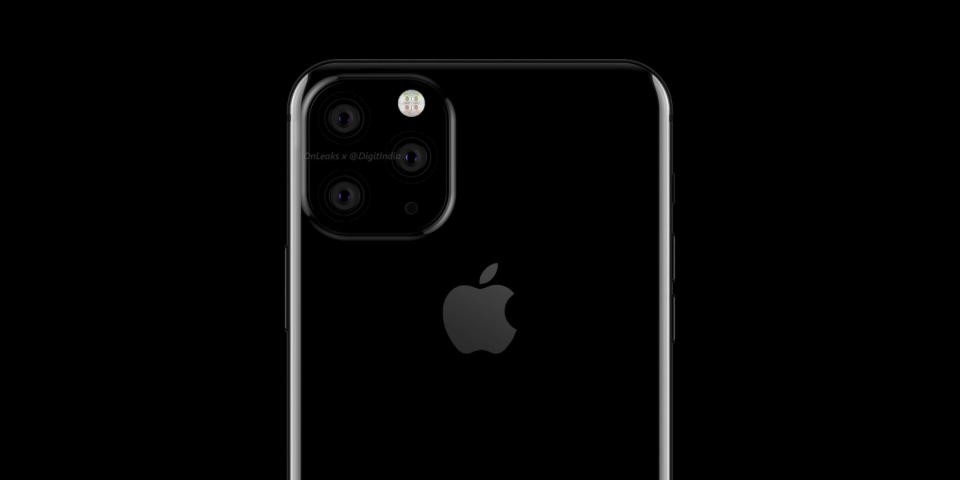
(Image: © Early iPhone 2019 render (Credit: OnLeaks/DigitIndia))
In May 2018, Deutsche Securities analyst Jialin Lu said that Apple was planning a triple-lens camera array in at least one of the iPhones it will release in 2019. According to the analyst, whose note was reported on by Economic Daily News, the cameras would offer advanced 3D sensing and use stereoscopic vision and dramatically improve the iPhone's augmented-reality capabilities. AR has been a major point of emphasis at Apple in recent years.

(Image: © iPhone XS and iPhone XS Max (Credit: Tom's Guide))
After initially throwing cold water on the idea of a triple lens iPhone back in September, longtime Apple analyst Ming-Chi Kuo now says Apple is likely to introduce three cameras to some of the new iPhones. Most iPhone 2019 rumors, like a report from the Wall Street Journal report in January, point to only the iPhone XS Max's successor adding a third lens. But Kuo's latest report suggests that both the 5.8- and 6.5-inch iPhones will add a third rear lens. The iPhone XR's successor is expected to adopt two rear cameras this year. Leaked renders show a 6.1-inch iPhone XR with a dual-lens setup housed in the same strange raised square that this year's iPhone XS is rumored to have.
Bloomberg has since come out with its own report, backing the idea that the iPhone XS Max successor will have three rear cameras — a standard lens, supported by wide-angle and zoom cameras. A laser-aided 3D camera that can sense depth and support AR apps won't arrive until 2020, according to that report.
Fitting three lens onto the back of an iPhone will be a challenge, as initial renders of what such a phone would look like are not that pretty. Apple may have come up with a solution, according to Kuo, who says the company will use a special dark coating to conceal the third lens on the back of its new phones. Apple could also use the technique on its front camera, which Kuo says is being bumped to 12 megapixels.
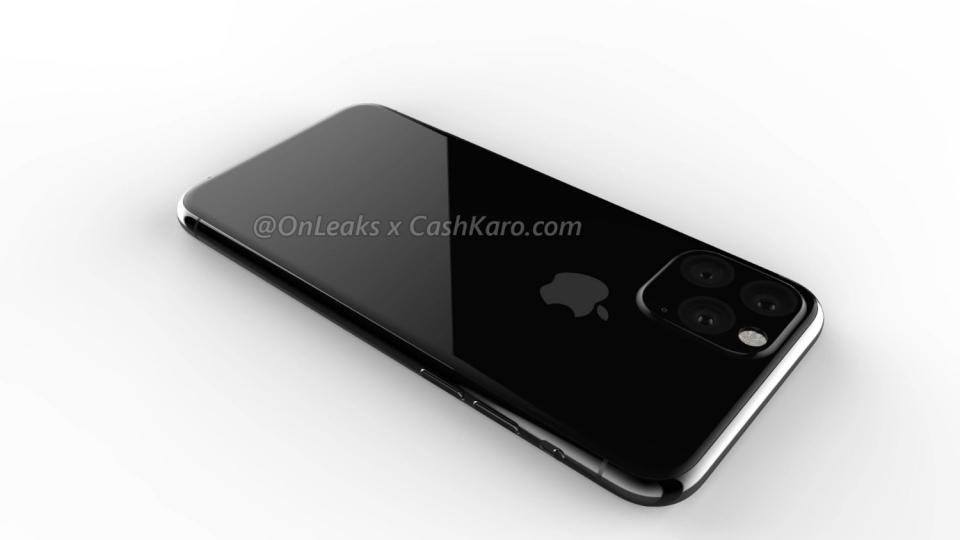
A leaked image of a phone case mold, based on information from inside the supply chain, shows the array on the upper left of the phone in a triangular formation. Bloomberg's Mark Gurman tweeted a picture showing all three iPhone 11 models with a similar square for the cameras.
Alleged next iPhone case moldings show what we discussed in our story last week in terms of new cameras. 3 on the high end, 2 on the new XR. Plus all models apparently getting a square, at least based on this one mold floating around. https://t.co/BhAFTZZL6u pic.twitter.com/QlNJTsApzXMay 13, 2019
A subsequent render from OnLeaks and CashKaro.com shows how the camera module could be integrated into the glass back of the iPhone 11 for a more pleasing design. And designer Hasan Kaymak created an iPhone concept video that gives us a better idea of what an iPhone with three rear cameras might look like.
Another concept video, this one from Techy Paradise, also showcases how the iPhone 11 might look, particularly with its camera setup. The video doesn't quite match rumored features — the camera array doesn't blend into the back of the iPhone the way Kuo describes, and there's not likely to be an in-display fingerprint sensor like this video claims — but it's still worth a look.
Processor: Bring on the A13
Apple has been working with Taiwan Semiconductor (TSMC) for years to supply the processors in its iPhones. And according to industry analysts, that won't change anytime soon.
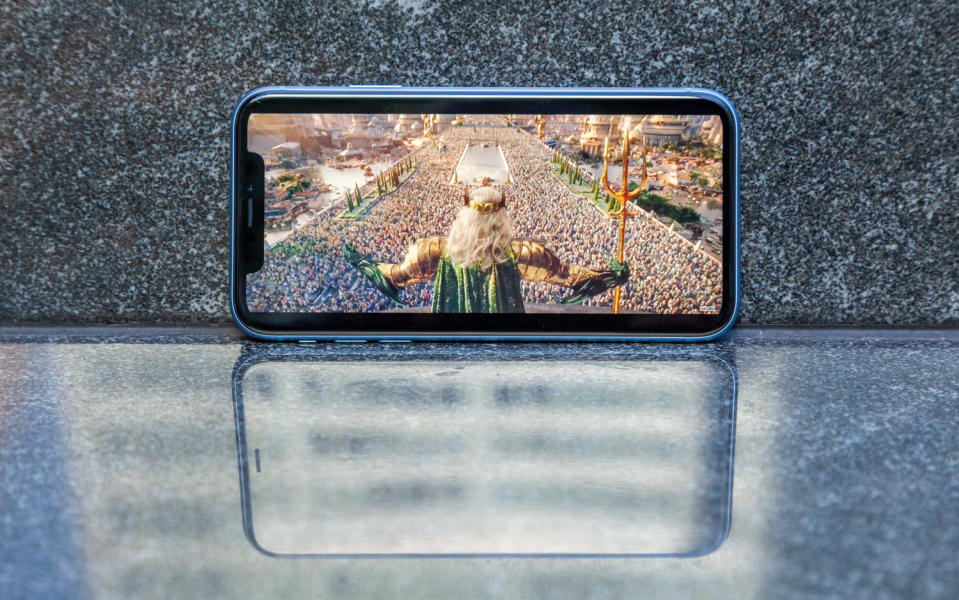
(Image: © iPhone XR (Credit: Tom's Guide))
Those analysts told EE Times last August that Apple has already inked a deal with TSMC to exclusively supply the processor for 2019 iPhones.
MORE: iPhone XS and XS Max Benchmarked: World's Fastest Phones (Again)
We don't know much about the chip right now, but if history is any indication, look for it to be even more powerful than the A12 Bionic chip you can get in the iPhone XS and iPhone XS Max. That enhanced power usually translates to better processing power and better graphics performance, but we expect another leap in machine learning via Apple's neural engine, which could make AR apps that much more immersive.
A bigger change could be coming in 2020. That's when Apple could shift to a 5-nanometer design for its mobile processors, according to a Digitimes report. The A12 Bionic is a 7-nanometer chip. The switch would likely mean a faster, more efficient processor.
Don't expect 5G
While other smartphone makers are offering 5G phones this year, including Samsung, LG and OnePlus, it looks like Apple is sitting out the first wave. A report in Bloomberg says that Apple likely won't deliver a 5G iPhone until 2020. (In fact, Apple could be rolling out as many as three 5G-capable iPhones in 2020, according to an analyst report from J.P. Morgan Chase.) This may not be a huge deal, as the major carriers will be rolling out their networks throughout 2019.
MORE: Apple's Sitting Out the 5G Party — It's the Right Move
One of the reasons Apple may have held out on adding 5G support to its phones is a years-long legal dispute with Qualcomm, which makes the 5G modems appearing in most 5G-ready phones debuting this year. Apple's current supplier, Intel, was ramping up its 5G modem production, causing some concern that a 5G iPhone may not even be ready by 2020. However, Apple and Qualcomm just resolved their dispute, so it's likely the 5G iPhone is back on track for next year. A separate report in The Information says that Apple is looking to develop its own modem, but that may not happen for a few years, especially after the settlement between Apple and Qualcomm.
Don't despair about 5G, though — connectivity could improve on the next iPhone if Apple adds support for Wi-Fi 6 to this year's models. That comes from a Barclays analyst note obtained by MacRumors, and it would mean faster connectivity for the new phones.
Design: A notch — with a twist
Most reports suggest that Apple won't change its iPhone design much in 2019. And that would suggest that the company will keep the same notch design it introduced with the iPhone X in 2017 and doubled down on with the new iPhone lineup in 2018.
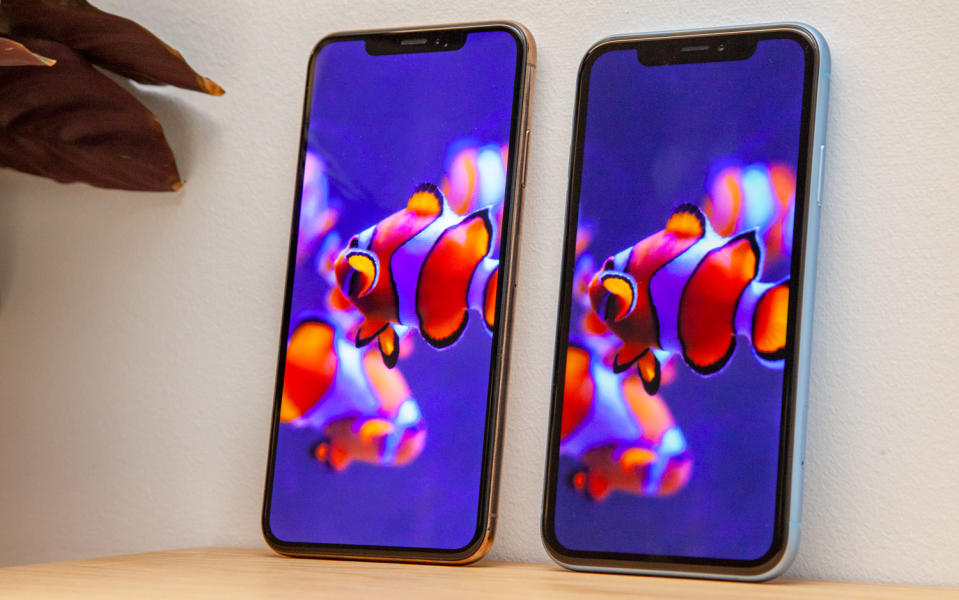
(Image: © The current iPhone design (Credit: Tom's Guide))
But the notch might shrink.
A report from ETNews in January suggested that Apple was considering combining the front-facing camera and Face ID components wherever possible. Doing so, the report said, might allow Apple to condense the front-facing components and ultimately reduce the size of the notch.
Or perhaps no notch at all?
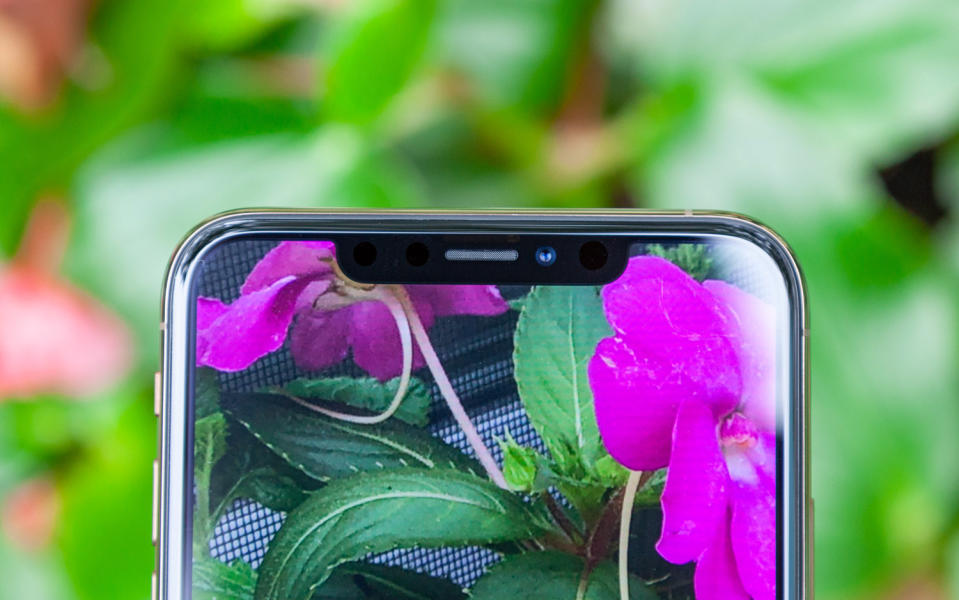
(Image: © The iPhone's notch (Credit: Tom's Guide))
It seems unlikely, but there has been some talk that Apple could ultimately ditch the notch in 2019.
Those hopes were bolstered in March 2018, when the U.S. Patent and Trademark Office (USPTO) published an Apple patent that showed a mobile device design sans the notch.
Interestingly, Apple acknowledged in the patent that sometimes, front-facing sensors that need to be integrated into an iPhone can be "aesthetically unappealing."
Another patent discovered by Dutch tech blog MobileKopen details a way to drill holes in display panels to allow for Face ID cameras and infrared sensors to look through the screen, effectively changing the notch to holes on the screen. In January, AMS, which supplies the electronics used in FaceID, announced a technology that reduces the space needed for the notch, which would seemingly pave the way toward a new design for Apple.
For his part, Kuo expects the biggest change to the iPhones' look in 2019 to be a textured glass panel similar to Google's Pixel 3.
As for small phone fans still pining for an update to the compact iPhone SE, 2019 may not be your year. However, a report from the Economic Daily claims that Apple will release a 4.7-inch iPhone in March 2020, mimicking the style of the iPhone 8. This phone would have a lower price tag — $649, according to reports — but still offer the A13 processor slated for 2019's iPhone updates.
So long 3D Touch?
Since the iPhone 6s, Apple has been using 3D Touch in its iPhones as a way to give you more contextual menus in the apps you're interacting with in iOS. But a report last August from Apple analyst Kuo hinted that might end in 2019.
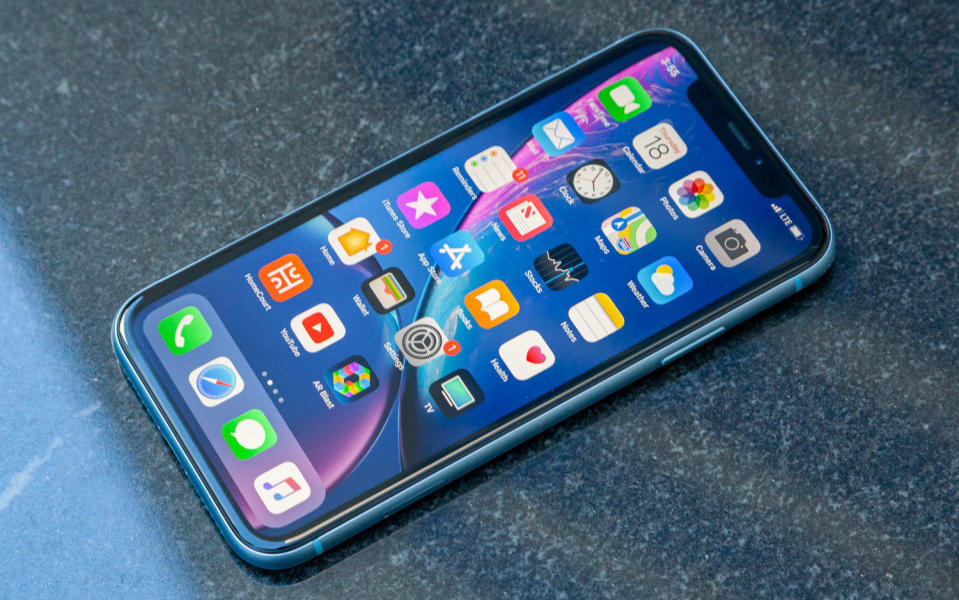
(Image: © The iPhone XR lacks 3D touch. (Credit: Tom's Guide))
At the time, Kuo, whose comments were reported on by The Verge, said that Apple would move away from 3D Touch in the handset. Kuo hinted that Apple views 3D Touch as an ancillary feature that adds cost to the smartphone without delivering much value. The rumor was given more credence in a Barclays analyst note in May, which seemed to confirm Kuo's original prediction.
By eliminating the feature, Apple could save some cash on producing each iPhone and increase profits. And chances are, Kuo said, most iPhone owners wouldn't care. We may get a sense of how important 3D Touch is to users long before the 2019 iPhones arrive. The iPhone XR doesn't have 3D Touch; it uses a feature called Haptic Touch instead.
As spotted by MacRumors, the release notes for iOS 13 note that the Quick View and Peak features — once only available to 3D Touch-enabled iPhones — will be supported by all iPhones that run the next version of Apple's mobile operating system. That's seen as another sign that this fall's iPhones will do away with 3D Touch in favor of Haptic Touch.
As for a foldable version of its iPhone, it's likely Apple is working on something. (The latest in a series of patents awarded to the company covers Apple working on a way to keep foldable phones from cracking in cold weather.) But while foldable phones appear to be all the rage in 2019, Apple's plans point to a 2020 release at the earliest.
MORE: Why Apple Will Be Late to Foldable Phones (and Still Win)
Hello, Apple Pencil
There had been some hope that Apple would bring Apple Pencil support to the iPhone in 2018. But alas, it never happened. Now, all eyes are on 2019.
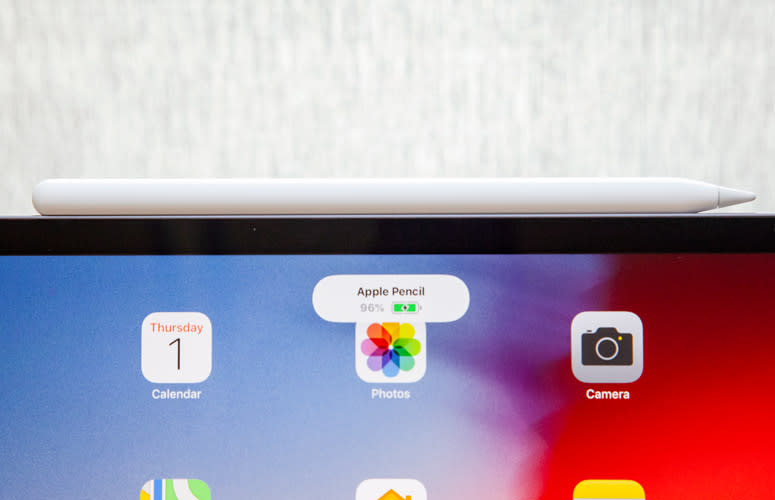
(Image: © Apple Pencil (Credit: Tom's Guide))
According to The Korea Herald's sources, Apple is considering adding Apple Pencil support to its 2019 iPhone lineup. That report said Apple might opt for a supercapacitor stylus, which is cheaper to manufacture than the electromagnetic-resonance technology Samsung uses for the S Pen that accompanies its Galaxy Note 9. However, Apple's technology would make it feel more like a pencil, according to the report.
The Apple Pencil 2 in the new iPad Pro delivers new functionality, such as gestures, and it magnetically attaches to the tablet for charging. Perhaps Apple will offer an Apple Pencil for an iPhone X Pro or whatever the largest-screen iPhone winds up being this fall.
A commitment to OLED
When Apple unveiled three new iPhones in 2018, the company's iPhone XS and iPhone XS Max shipped with OLED technology. The iPhone XR, however, offers LCD.
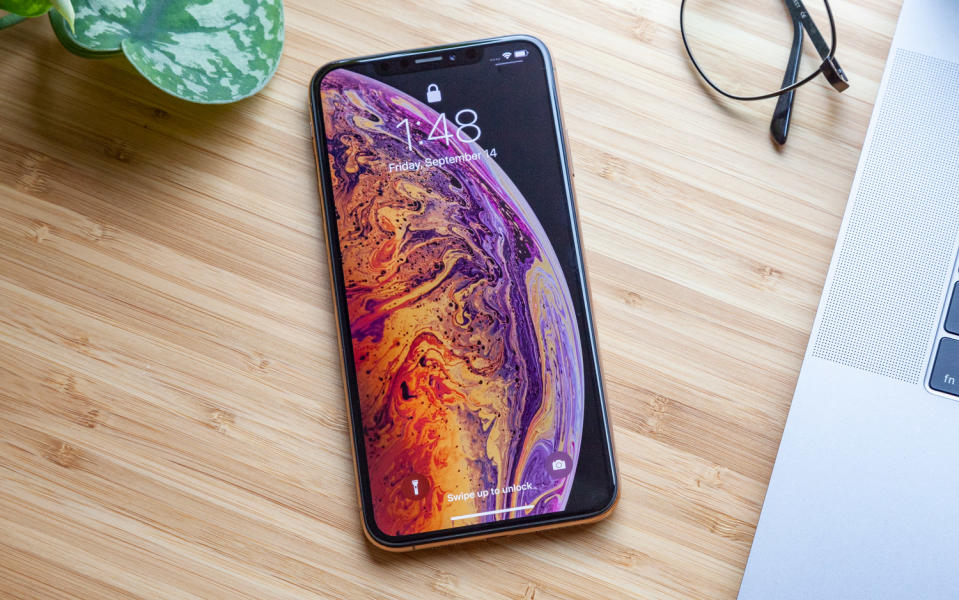
(Image: © The 2018 iPhone XS introduced OLED screens. (Credit: Tom's Guide))
While some had hoped to see OLED in all three models, that might actually happen in 2019. A report from ETNews in May 2018 cited sources who said Apple would turn to an all-OLED strategy this year and offer the technology in all three of its smartphones.
Don't pop the champagne corks just yet, though. The Wall Street Journal's earlier report on three iPhone models suggests that the cheapest model will still use an LCD panel, and a subsequent Journal report reiterates that Apple's move to an all-OLED lineup won't occur until 2020. Kuo's 2019 Apple product line forecast makes the same prediction.
Battery power and fast charging
We haven't heard very much about how Apple plans to improve battery life in this year's iPhones. But one possible change would be a welcome one — Kuo says the new iPhones will offer bi-directional wireless charging that lets the phone charge other devices. It's a feature that Samsung just added to its Galaxy S10 lineup.
In a follow-up report published in April, Kuo said the batteries on the new iPhones will be larger than the 2018 models, in part to support that bi-directional charging feature. The iPhone XS successor will see the biggest jump, with a battery between 3,200 mAh and 3,500 mAh, while the increase for the successor the XS Max will be more modest at around 3,650 mAh. The new version of the iPhone XR will see little change to its battery, according to Kuo.
Leaks reportedly showing off the logic board in the iPhone 11 support that rumor. The redesigned logic board would accommodate a larger battery as well as that triple-lens camera setup.
Apple's phones offer good battery life, but they haven't cracked the top 10 of our list of the smartphones with the longest battery life. Perhaps the iPhone 11 will change that.
Are you sick of your iPhone taking forever to charge? The Japanese site Macotakara says that the successors to the iPhone XS and XS Max will come with a USB C to Lightning cable and more powerful power brick for 18-watt fast charging.
What we want
What we want and what we'll actually get are two very different things, as Apple's history of product launches has shown. But here's a quick rundown of some features we hope that Apple works into its 2019 iPhone lineup.
USB-C fast charging: A report earlier this year indicated that Apple will stick with Lightning this year, despite switching to USB-C for the 2018 iPad Pro. However, new visuals in the iOS 13 developer beta show an iPhone restoring from a Mac via USB-C, which could mean Apple is going to surprise us by making the switch to the widely accepted charging port in 2019. It's also possible that Apple will switch the charging cable included in the iPhone box from USB-A to USB-C, keeping the Lightning plug on the iPhone end.

(Image: © Charging an iPhone XS (Credit: Tom's Guide))
USB-C allows for fast charging and the ability to connect external monitors to the tablet. Apple is also investing heavily in USB-C in its MacBooks.
MORE: Best Qi Wireless Chargers for Your iPhone
In-screen fingerprint sensor: There have been rumors for years that Apple is working on a virtual fingerprint sensor that would sit underneath the iPhone's display. But so far, at least, it hasn't happened.
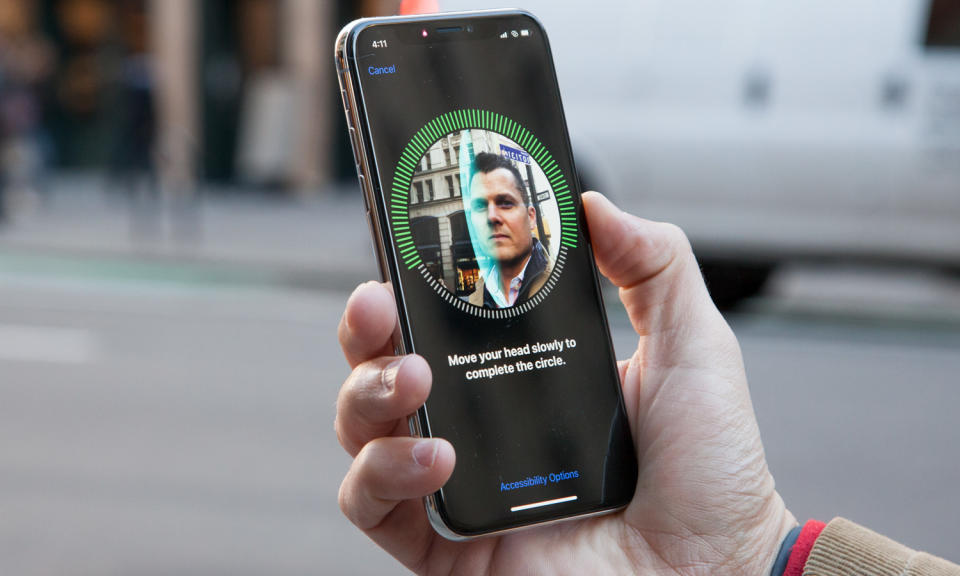
(Image: © Face ID on the current iPhone (Credit: Tom's Guide))
2019 is the year for it. Apple competitors OnePlus, Huawei and Samsung have phones that deliver the feature, and Samsung is rumored to be bundling it into a future device of its own. And there's something very simple about touching the display to unlock it, without having to swipe up.
That said, Apple has been touting heavily the value of its Face ID technology, saying that it's both more secure and more reliable that other solutions. So fingerprint sensors on the iPhone could be dead forever — virtual or not.
Ditch the notch: Apple's notch has become iconic and has been copied many times, but it can still be distracting when you're using apps with a white background or watching movies at full screen in landscape mode. And as noted above, even Apple has seemingly acknowledged in a patent filing that it's not an ideal solution.

(Image: © Current iPhones, side by side (Credit: Tom's Guide))
Let's hope Apple can find a way in 2019 to bundle the front-facing sensors another way and get rid of the notch. Or at least make it smaller.
A revamped design: Apple's 2018 iPhones were designed for an "S" year, or one in which the company makes iterative changes to its phones but holds off on any radical revamps.
But in 2019, all eyes will be on Apple's iPhone design to see if it's willing to mix things up. Here's hoping the company does that and offers a thinner design, more materials (where's the ceramic iPhone, after all?) and screen changes. There's no reason to offer a screen bigger than the 6.5-inch display in the iPhone XS Max, but there's also nothing wrong with taking some chances on design.


